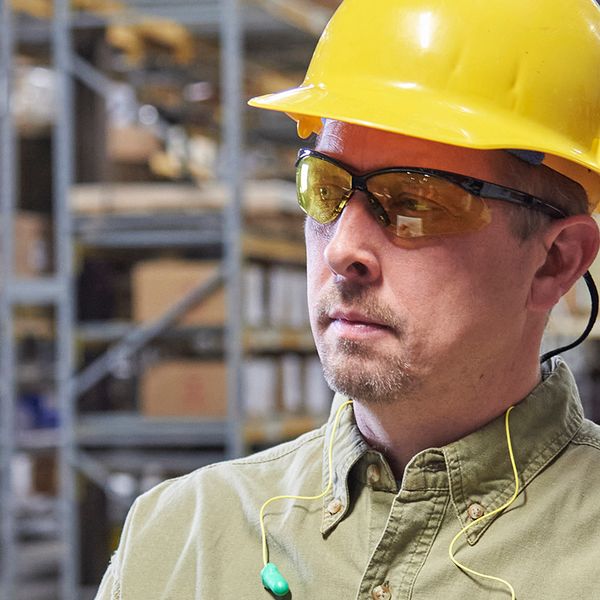Which serious violations caught OSHA’s attention the most?
If death or serious physical harm can result from a workplace hazard and the employer knew or should have known the hazard exists, OSHA calls it a “serious” violation and can slap an employer with a $14,502 penalty for each one. Because more than one serious violation may be found, total penalty amounts can climb fast!
However, now OSHA posted its most frequently cited serious violations for general industry, maritime, and construction for fiscal year 2022. The agency recapped the violations in three slide presentations with 48 bar charts in all. Knowing where your peers went wrong may help your establishment prioritize its compliance efforts.
Highlights for five industries
Five of the 48 bar charts offer either the top 10 or top 5 lists for 29 CFR 1910, 1915, 1917, 1918, and 1926. For general industry, we see the following top 10 dominated by five OSHA standards:
- 1910.212(a)(1), Machine guarding – Types of guarding methods, 977 violations;
- 1910.1200(e)(1), Hazard communication – Written program, 783 violations;
- 1910.1200(h)(1), Hazard communication – Information and training, 708 violations;
- 1910.134(e)(1), Respirators – Employer shall provide medical evaluations, 497 violations;
- 1910.134(f)(2), Respirators – Employer shall ensure an employee is fit tested, 459 violations;
- 1910.147(c)(4)(i), Hazardous energy control – Procedures shall be developed, 439 violations;
- 1910.178(l)(1)(i), Powered industrial trucks – Competency training, 368 violations;
- 1910.212(a)(3)(ii), Machine guarding – Point of operations, 334 violations;
- 1910.134(c)(1), Respirators – Employer establishing a written respirator program, 301 violations; and
- 1910.1200(g)(8), Hazard communication – Safety data sheets readily accessible, 285 violations.
For maritime, we don’t see large numbers of violations, so looking just at the top violation in the three maritime industries, we discover:
- Shipyard employment: 1915.73(d), Guarding of deck opening and edges, 5 violations;
- Marine terminals: 1917.112(b)(1), Guardrails provided at locations where an employee is exposed to a fall, 5 violations; and
- Longshoring: 1918.22(b), Handrails shall be a minimum height of 33 inches, 2 violations.
For construction, OSHA tallies the following top 10:
- 1926.501(b)(13), Fall protection – Residential construction, 4,171 violations;
- 1926.102(a)(1), Eye and face protection – Use of appropriate protection, 1,551 violations;
- 1926.1053(b)(1), Ladders – Extend 3 feet above landing, 1,540 violations;
- 1926.503(a)(1), Fall protection – Training for those exposed to fall hazards, 1,228 violations;
- 1926.100(a), Head protection – Use of protection, 856 violations;
- 1926.501(b)(1), Fall protection – Unprotected sides and edges, 706 violations;
- 1926.453(b)(2)(v), Aerial lifts – Fall protection while in basket, 591 violations;
- 1926.20(b)(2), General safety and health provision – Inspection by a competent person, 442 violations;
- 1926.501(b)(10), Fall protection – Roofing work on low-sloped roofs, 406 violations; and
- 1926.21(b)(2), General safety and health provision – Recognition and avoidance of unsafe hazards, 401 violations.
As shown above:
- Of all the industries, citations for 29 CFR 1926.501(b)(13) were the most frequently cited in fiscal year 2022, with 4,171 citations. That standard requires fall protection for residential construction.
- OSHA cited construction almost 11,900 times for the 10 most frequently cited serious violations for that industry. Whereas, the agency cited general industry less than half that figure, with about 5,150 citations for its top 10. Shipyards, marine terminals, and longshoring received 18 or fewer citations total in their top 5 lists.
The remaining 43 bar charts examine the top 5 lists for each subpart of 29 CFR 1910 and 1926.
Key to remember
If death or serious physical harm can result from a workplace hazard and the employer knew or should have known the hazard exists, OSHA calls it a “serious” violation. The agency just posted its “Most Frequently Cited Serious Violations” slide presentations for general industry, construction, and maritime for fiscal year 2022. Knowing where your peers went wrong may help your establishment prioritize its compliance efforts.



















































